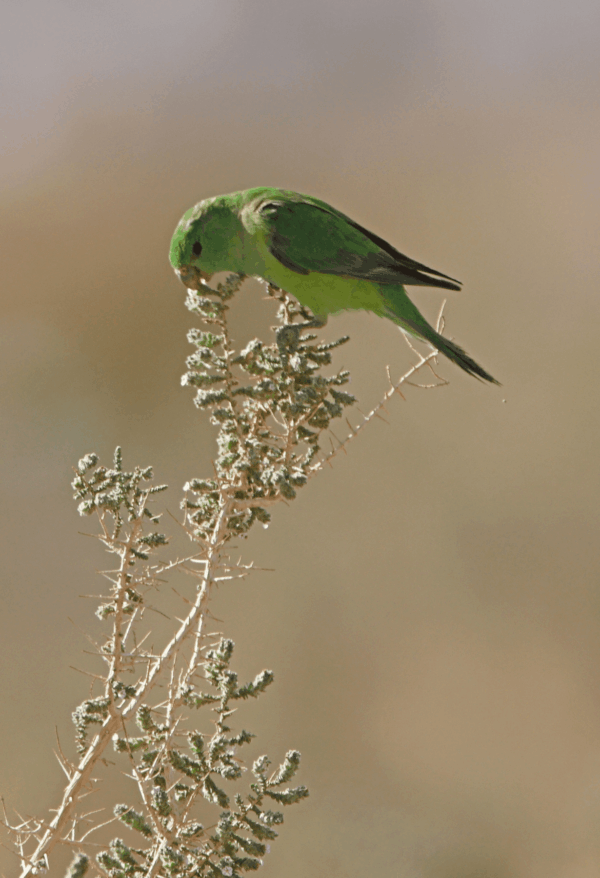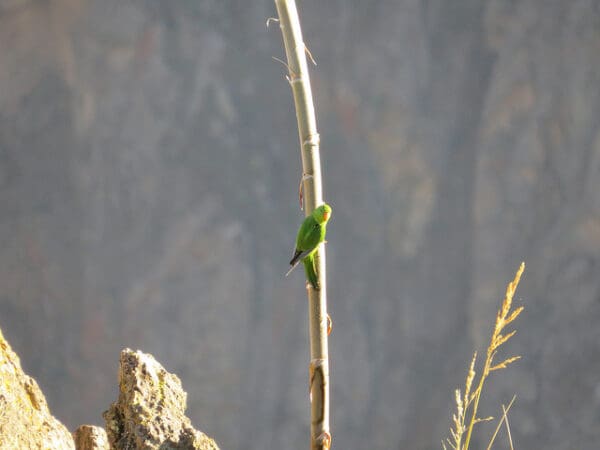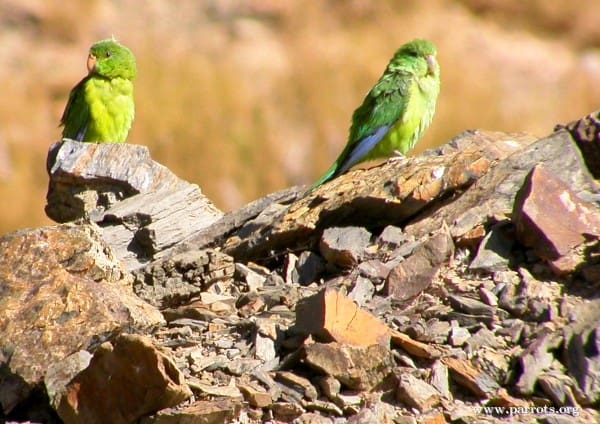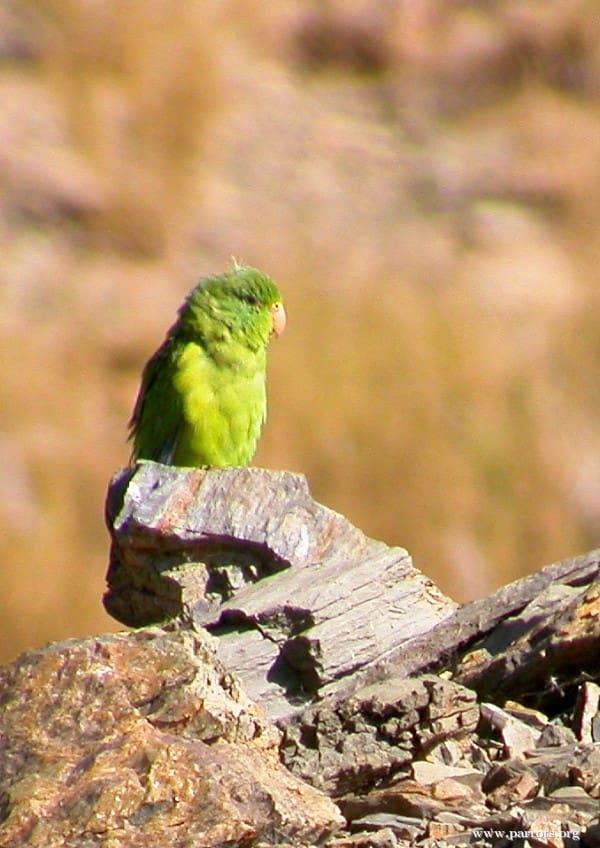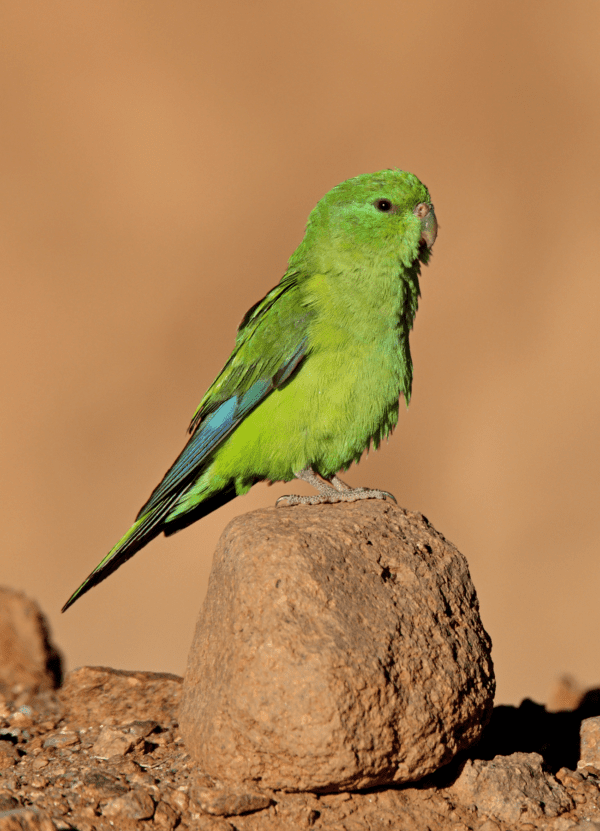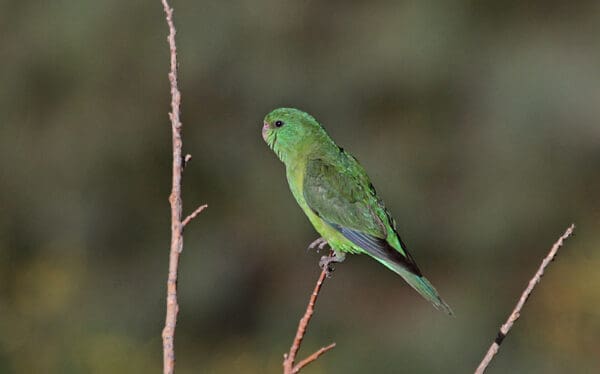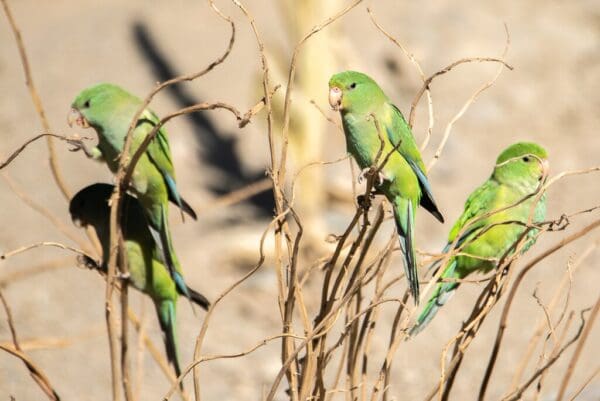Mountain Parakeet
Also known as:
Golden-fronted Parakeet, Robert's Parakeet (P.a. robertsi), Margarita's Parakeet (P.a. margaritae)
Also known as:
Golden-fronted Parakeet, Robert's Parakeet (P.a. robertsi), Margarita's Parakeet (P.a. margaritae)
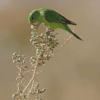
![© Valentin [CC BY-NC 2.0] via Flickr A wild female Mountain Parakeet takes flight](https://parrots.org/wp-content/uploads/2023/01/wpt_Mountain-Parakeet_1361-11-100x100.jpg)
![© Valentin [CC BY-NC 2.0] via Flickr A wild female Mountain Parakeet perches on a rock](https://parrots.org/wp-content/uploads/2023/01/wpt_Mountain-Parakeet_1361-10-100x100.jpg)
![© Jo Richmond [CC BY-NC-ND 2.0] via Flickr A wild Mountain Parakeet clings to a branch](https://parrots.org/wp-content/uploads/2023/01/wpt_Mountain-Parakeet_1361-9-100x100.jpg)
![© Ron Knight [CC BY 2.0] via Flickr A wild flock of Mountain Parakeets forages in a bush](https://parrots.org/wp-content/uploads/2023/01/wpt_Mountain-Parakeet_1361-8-100x100.jpg)
![© Juan Malo de Molina [Public Domain] Wikimedia Commons A wild male Mountain Parakeet perches on a cactus](https://parrots.org/wp-content/uploads/2023/01/wpt_Mountain-Parakeet_1361-7-100x100.jpg)
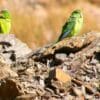
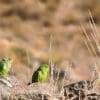
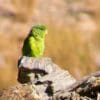
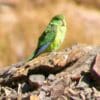


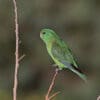
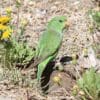
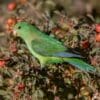


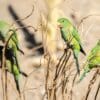
DID YOU KNOW?
The Mountain Parakeet lives at altitudes of up to 11,500 ft.

Psilopsiagon

aurifrons
Size:
18 cm (7 in)
Weight:
45 g (1.5 oz)
Subspecies including nominate:
four: P.a. aurifrons, P.a. robertsi, P.a. margaritae, P.a. rubrirostris
Colour Adult:
P.a. aurifrons: Male-mainly green in colour; yellow face, throat, and sides of breast; emerald green cheeks; strong yellow wash on lower breast and upper abdomen; blue outer webs of primary feathers. Beak horn in colour. Eye brown. Female-yellow on forehead and lores absent.
P.a. robertsi: Male-darker green underparts, omitting chin and throat, yellow wash absent; bright yellow chin and throat. Female-as in aurifrons, but underparts darker green.
P.a. margaritae: Both adults as in female aurifrons. Larger in size; shorter tail. Beak horn coloured in male, dusky grey in female.
P.a. rubrirostris: Both adults as in margaritae, but darker green head and underparts, tinted with blue. Beak pink/buff in male, dusky grey in female.
Colour Juvenile:
P.a. aurifrons: As in adult female, but with shorter tail.
Call:
Calls are described as weak and piping; also a high-pitched twittering. Some notes rolling.
More Information:
Content Sources:
CITES
BirdLife International
Cornell Lab of Ornithology/Birds of the World
Parrots: A Guide to Parrots of the World, Juniper and Parr, 1998
Parrots of the World, Forshaw and Cooper, 1977. 2010 edition
Parrots of the World, Forshaw, 2006.
Parrots in Aviculture, Low, 1992.
Captive Status:
Rare in captivity.
Longevity:
10-15 yrs
Housing:
Needs hiding places so provide boxes and foliage where birds can disappear from view. Provide cage or aviary, indoors (if warm) or outdoors, minimum length 1.2 m (4 ft).
Diet:
Small seed mix such as: canary, millet and smaller amounts of oats, buckwheat, safflower and a little hemp; limited sunflower seed; spray millet; green leaves such as: Swiss chard, lettuce, sowthistle, dandelion, chickweed; and seeding grasses; rearing food made from: hardboiled egg, wholegrain bread and carrot, all ground to crumbly consistency; fruits such as: apple, pear, banana, mango, cactus fruit, papaya, kiwi, pomegranate; complete kibble; calcium and vitamin D3 supplements.
Enrichment:
Provide much foliage for birds to fly in and out of; provide places to hide and bathe. Not vigorous chewers. Provide unsprayed flowering branches for the buds.
Nest Box Size:
Vertical box 8″ x 8″ x 32″ (20.3 cm x 20.3 x 81.3 cm).
Clutch Size:
5
Fledging Age:
7 weeks
Hatch Weight:
—
Peak Weight:
—
Weaning Weight:
—
World Population:
Unknown but described as fairly common, stable.
IUCN Red List Status:
Least Concern
CITES Listing:
Appendix II
Threat Summary:
Not globally threatened. Common to locally abundant, although robertsi appears to be virtually unknown to science. Trade is minor.
Range:
P.a. aurifrons: C Peru.
P.a. robertsi: Rio Maranon valley, NW Peru.
P.a. margaritae: S Peru, CW Bolivia and N Chile to NW Argentina.
P.a. rubrirostris: NW Argentina and C Chile.
Habitat:
Found up to 3500 m (11,480 ft) in shrubby and wooded habitats including riparian thickets and thorny scrub, mist vegetation in coastal W Peru and open grasslands with scattered bushes and cacti on puna; also agricultural areas, plantations and urban gardens and parks.
Wild Diet:
Feeds on buds and seeds of Lepidophyllum, Fabiana densa and Adesmia and other legumes, and berries.
Ecology and Behaviour:
Social; searches for food in bushes and on the ground. Nests in crevices or holes in rocky outcrops or high banks.
Clutch and Egg Size:
5 broadly elliptical eggs, 28.5 x 20.0 mm (1.1 x 0.8 in).
Breeding Season:
October-December, N Chile; February-March, Argentina. Nest is in burrow in dry riverbank, steep cliff or canyon, often with several in fairly close proximity.
Related Links:
—
